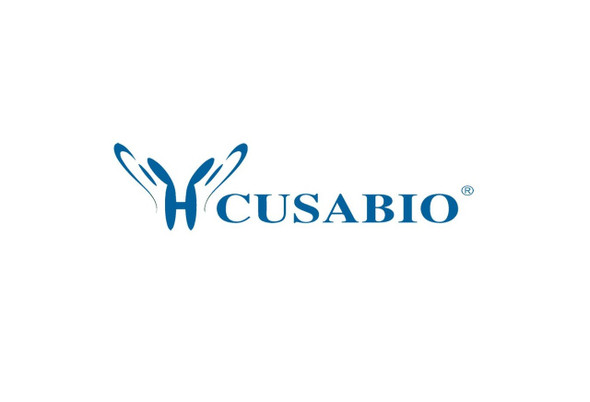Cusabio Human Recombinants
Recombinant Human Proteasome subunit beta type-4 (PSMB4) | CSB-RP013744h
- SKU:
- CSB-RP013744h
- Availability:
- 13 - 23 Working Days
Description
Recombinant Human Proteasome subunit beta type-4 (PSMB4) | CSB-RP013744h | Cusabio
Alternative Name(s): 26KDA prosomal protein ;HsBPROS26 ;PROS-26Macropain beta chain;Multicatalytic endopeptidase complex beta chain;Proteasome beta chain;Proteasome chain 3 ;HsN3
Gene Names: PSMB4
Research Areas: Immunology
Organism: Homo sapiens (Human)
AA Sequence: TQNPMVTGTSVLGVKFEGGVVIAADMLGSYGSLARFRNISRIMRVNNSTMLGASGDYADFQYLKQVLGQMVIDEELLGDGHSYSPRAIHSWLTRAMYSRRSKMNPLWNTMVIGGYADGESFLGYVDMLGVAYEAPSLATGYGAYLAQPLLREVLEKQPVLSQTEARDLVERCMRVLYYRDARSYNRFQIATVTEKGVEIEGPLSTETNWDIAHMISGFE
Source: E.coli
Tag Info: N-terminal GST-tagged
Expression Region: 46-264aa
Sequence Info: Full Length of Mature Protein
MW: 51.4 kDa
Purity: Greater than 90% as determined by SDS-PAGE.
Relevance: The proteasome is a multicatalytic proteinase complex which is characterized by its ability to cleave peptides with Arg, Phe, Tyr, Leu, and Glu adjacent to the leaving group at neutral or slightly basic pH. The proteasome has an ATP-dependent proteolytic activity. Mediates the lipopolysaccharide-induced signal macrophage proteasome . SMAD1/OAZ1/PSMB4 complex mediates the degradation of the CREBBP/EP300 repressor SNIP1.1 Publication
Reference: Sequence analyses and inter-species comparisons of three novel human proteasomal subunits, HsN3, HsC7-I and HsC10-II, confine potential proteolytic active-site residues.Nothwang H.G., Tamura T., Tanaka K., Ichihara A.Biochim. Biophys. Acta 1219:361-368(1994)
Storage: The shelf life is related to many factors, storage state, buffer ingredients, storage temperature and the stability of the protein itself. Generally, the shelf life of liquid form is 6 months at -20?/-80?. The shelf life of lyophilized form is 12 months at -20?/-80?.
Notes: Repeated freezing and thawing is not recommended. Store working aliquots at 4? for up to one week.
Function: Component of the 20S core proteasome complex involved in the proteolytic degradation of most intracellular proteins. This complex plays numerous essential roles within the cell by associating with different regulatory particles. Associated with two 19S regulatory particles, forms the 26S proteasome and thus participates in the ATP-dependent degradation of ubiquitinated proteins. The 26S proteasome plays a key role in the maintenance of protein homeostasis by removing misfolded or damaged proteins that could impair cellular functions, and by removing proteins whose functions are no longer required. Associated with the PA200 or PA28, the 20S proteasome mediates ubiquitin-independent protein degradation. This type of proteolysis is required in several pathways including spermatogenesis (20S-PA200 complex) or generation of a subset of MHC class I-presented antigenic peptides (20S-PA28 complex). SMAD1/OAZ1/PSMB4 complex mediates the degradation of the CREBBP/EP300 repressor SNIP1.
Involvement in disease:
Subcellular Location: Cytoplasm, Nucleus
Protein Families: Peptidase T1B family
Tissue Specificity:
Paythway:
Form: Liquid or Lyophilized powder
Buffer: If the delivery form is liquid, the default storage buffer is Tris/PBS-based buffer, 5%-50% glycerol. If the delivery form is lyophilized powder, the buffer before lyophilization is Tris/PBS-based buffer, 6% Trehalose, pH 8.0.
Reconstitution: We recommend that this vial be briefly centrifuged prior to opening to bring the contents to the bottom. Please reconstitute protein in deionized sterile water to a concentration of 0.1-1.0 mg/mL.We recommend to add 5-50% of glycerol (final concentration) and aliquot for long-term storage at -20?/-80?. Our default final concentration of glycerol is 50%. Customers could use it as reference.
Uniprot ID: P28070
HGNC Database Link: HGNC
UniGene Database Link: UniGene
KEGG Database Link: KEGG
STRING Database Link: STRING
OMIM Database Link: OMIM









